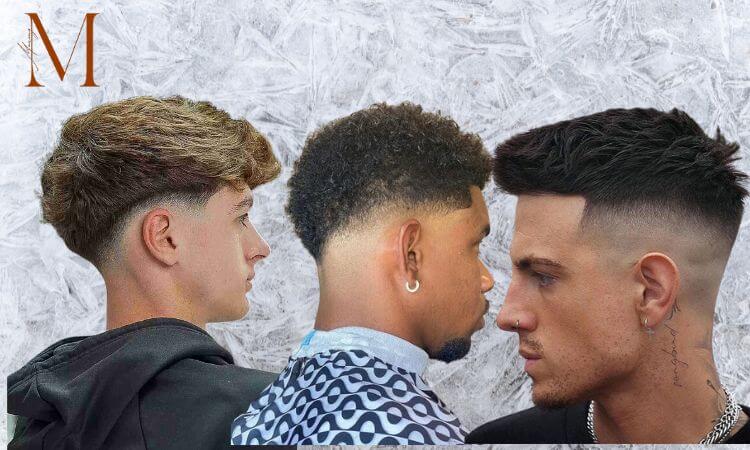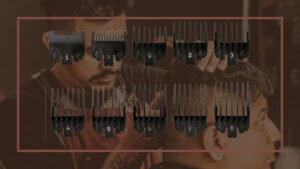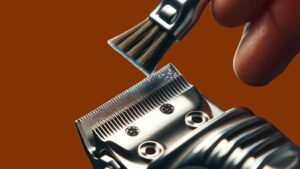
Low Fade vs Mid Fade vs High Fade: Explained
Let’s explain the difference between low fade vs mid fade vs high fade.
The low fade involves gradually trimming the hair to its shortest point along the hairline, whereas the mid fade starts its short taper a couple of inches above that. These fades are referred to as drop fades, as the fade line descends in an arc behind the ear, following the natural curves of the hairline and neck.
The high fade typically traces a path that extends straight back from the forehead’s corner. In contrast to the one-length undercut, which shares a comparable outline, the fade progressively shortens towards the lower head, occasionally reaching the point of being completely skin-close. The upper segment of the high fade conforms to the trajectory of a drop fade.
I know this sounds complicated, but just look at the pictures below and you will understand the difference.
What is a Low Fade?

The low fade begins to get shorter near the hairline, making a simple yet adaptable style with a bit of difference. Usually, the haircut blends hair that’s shorter just above the ear, and this shorter hair gradually connects with the longer hair on the upper part. If you want a specific finish, you can tell your barber to do a skin/bald, drop, or burst fade. The low taper fade looks great with various men’s hairstyles like the comb over, quiff, crop top, classic side part, modern mullet, and crew cut.
Low fade looks best for round face shapes.
What is a Mid Fade?

A mid fade haircut starts between your temples and ears. It balances length and contrast, making styling easy. Pairing it with long-top-short-sides hair lets you style various looks like quiffs, pompadours, and side parts. Even if you like short haircuts, the middle fade is a great choice.
Mid fade looks best for diamond, oval, and triangular face shapes.
What is a High Fade?

A high fade is a short haircut that really trims the hair on the sides and back to make a strong difference in how it looks. Compared to the mid fade, which can look cool and work in different ways, the high fade has an aggressive, stylish feel. People usually combine the high fade with hairstyles like the buzz cut.
High fade looks best for Heart or Oval face shape.
Low Fade Vs Mid Fade
Let’s outline five contrasts between low fade and mid fade hairstyles:
| Aspect | Low Fade | Mid Fade |
|---|---|---|
| Starting Point | Begins just above the ear area. | Starts at the temple, around four inches above the ear. |
| Style Effect | Presents a formal and sharp look. | Offers a casual and trendy vibe. |
| Transition | Yields a softer transition due to its lower start. | Results in a sharper transition as it begins higher above the ears. |
| Head Shape | Tends to create a rounder head appearance. | Tends to elongate the head’s appearance. |
| Styling | Provides limited styling options. | Offers a broader range of styling choices. |
Low Fade vs High Fade
| Aspect | Low Fade | High Fade |
|---|---|---|
| Starting Point | Begins just above the ear area. | Starts at the temple or higher, around the parietal ridge. |
| Style Effect | Presents a formal and sharp look. | Offers a bold and distinct appearance. |
| Transition | Yields a softer transition due to its lower start. | Creates a noticeable contrast with a higher starting point. |
| Head Shape | Tends to create a rounder head appearance. | Tends to emphasize length and verticality in the head’s appearance. |
| Styling | Provides limited styling options. | Offers various creative styling possibilities. |
Best Haircuts For Low Fade
Side Part

The side part fade hairstyle is a modern look that’s become popular in recent years. Consider your face shape when getting this style – if your face is round, adjust the fade from low to high. A high fade with a side part can elongate your face, so keep the sides longer to avoid an awkward look.
Slicked Back Hair

When you cut the sides of your hair short, adding a beard can balance your appearance. You can choose a light beard or a full one. To look stylish, try slicking back the hair on top.
Fringe

Fringes are versatile cuts that match your face and style – they work for mid and high fade. You can go for a casual or polished look with endless styles.
Bets Haircuts For Mid Fade
Caesar Cut

A Caesar cut features a square front created by a short horizontal fringe. This haircut works best when adding a mid fade on the sides, making it a low-maintenance choice that’s making a comeback.
Kinky Top

This style trims the sides and back using the bald taper fade method, keeping the top long and mid fade on side. Clippers define the hairlines. It’s best for men with tight, curly ringlets and kinky hair.
Classic Quiff

Classic Quiff is a great option for mid fades; it is taken down to the skin on the back and sides and blended into the top.
Best Haircuts For High Fade
Disconnected Undercut

Combine the high fade with a noticeable contrast between the longer top and shorter sides.
Spiky Hair

Style the hair on top into spikes for a playful and edgy look alongside the high fade.
Curly Top

Embrace your natural curls on top while keeping the sides faded for a stylish contrast.
Frequently Asked Questions
If you have a round face, a high fade can add length and balance.
For oval faces, all fades work well, so it’s a matter of personal preference.
Square faces benefit from the softness of a low fade to contrast angular features.
All hair types can work with any fade, but low fades can complement thick hair, mid fades are versatile for various textures, and high fades can enhance fine hair by adding volume on top.
Yes, barbers can customize the fade level to suit your preferences. You can ask for a fade that falls between low and mid, mid and high, or any other specific combination.
Remember, the best fade for you depends on your personal style, hair texture, face shape, and desired maintenance level.
Related Article: Bad Fade Vs Good Fade | Zero Fade vs Skin Fade: Explained


